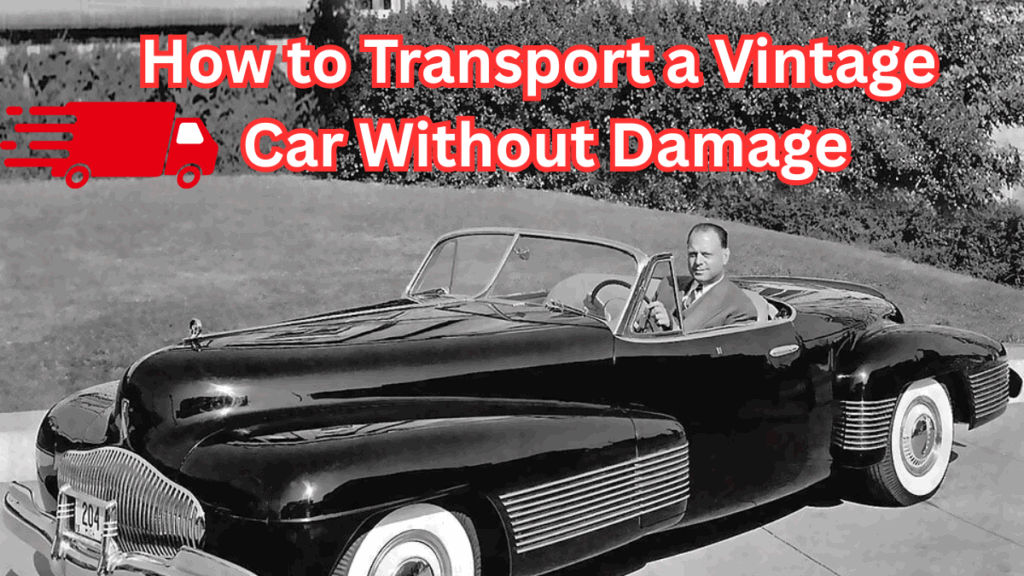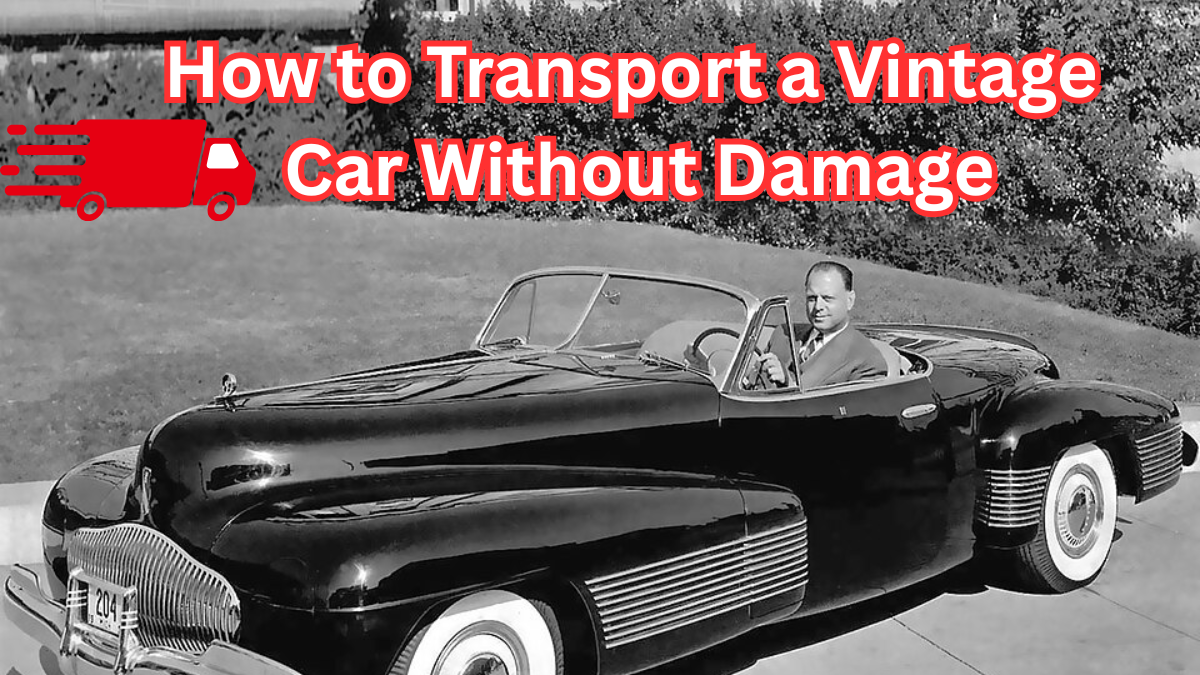Vintage cars aren’t just vehicles — they’re pieces of art, history, and emotion. Whether it’s a cherished family heirloom or a newly restored gem, knowing how to transport a vintage car safely is essential to protect your investment. This guide will walk you through the key steps and expert car transport tips for moving classic vehicles without damage.

Why Special Care is Needed for Vintage Cars
Classic vehicles are delicate by nature. Many of them:
-
Lack modern protective features
-
Are rare or irreplaceable models
-
Have custom or fragile parts that can be easily damaged
This is why moving classic vehicles requires more than a typical transport service. It calls for careful handling, thoughtful planning, and experienced professionals.
How to Transport a Vintage Car Safely
1. Choose the Right Transport Method
There are two primary types of car carriers available:
| Transport Type | Best For | Protection Level |
|---|---|---|
| Open Carrier | Short distances, budget transport | Low |
| Enclosed Carrier | Long-distance or high-value classics | High |
If you’re wondering how to transport a vintage car safely over long distances, enclosed transport is your best option. It shields your car from weather, dust, and road debris.
2. Research and Hire a Reputable Transport Company
Experience makes a big difference when it comes to moving classic vehicles. Look for companies that:
-
Specialize in transporting vintage or classic cars
-
Have strong reviews and offer insurance coverage
-
Provide enclosed transport options
-
Are licensed, bonded, and fully insured
Ask whether the carrier has experience with high-value or rare vehicles to ensure your car is in expert hands.
3. Prepare Your Car for the Journey
Before handing over your car, take time to prepare it properly. This ensures it travels safely and you avoid any preventable issues.
Checklist for Preparation:
-
Wash the car and take detailed photos for documentation
-
Remove all personal items and valuables
-
Secure or remove loose parts like spoilers or mirrors
-
Check fluid levels, battery, and tire pressure
-
Ensure the gas tank is only ¼ full
-
Disable any alarm systems
4. Double Check Insurance Coverage
Make sure both your insurance and the transport company’s policy provide adequate coverage:
-
Confirm your policy includes transport-related damage
-
Ask the transporter for proof of insurance
-
Understand what damages are covered under their policy
Don’t make assumptions. Get everything in writing and review the details before signing a contract.
5. Inspect the Car Upon Delivery
Once your car arrives, it’s essential to inspect it thoroughly before signing off:
-
Compare the condition with the photos taken prior to transport
-
Check under the hood and beneath the vehicle
-
Note any scratches, dents, or mechanical issues
-
Report any damage immediately to the carrier and your insurer
Only sign the delivery receipt after you’re satisfied with the condition.
Quick Car Transport Tips for Vintage Vehicles
Here’s a quick summary to help you stay on track:
-
Opt for enclosed transport for full protection
-
Book early to secure experienced carriers
-
Take detailed photos before transport
-
Use a licensed and insured company
-
Remove all non-essential items from the vehicle
FAQs
What’s the safest way to transport a vintage car?
The safest method is using enclosed transport through a reputable company that specializes in moving classic vehicles. This ensures your car is protected from the elements and accidental damage.
Can I transport a non-running classic car?
Yes. Most transport companies can handle non-operational cars. Make sure to inform them in advance so they bring the proper loading equipment like winches or dollies.
How much does it cost to transport a vintage car?
The cost varies based on distance, type of transport, vehicle value, and seasonal demand. Enclosed transport is more expensive than open carriers but offers better protection for your classic car.
Is it okay to leave personal items in the car during transport?
No. It’s best to remove all personal items. Most transport companies don’t cover damage or theft of personal belongings inside the car, and it may violate their policy.
Final Thoughts
Learning how to transport a vintage car safely is essential for anyone who owns or deals with classic vehicles. From choosing the right carrier to preparing your car for the trip, every step counts. By following these expert car transport tips and working with trusted professionals, you can ensure your prized possession reaches its destination without a scratch.
Click here to learn more
